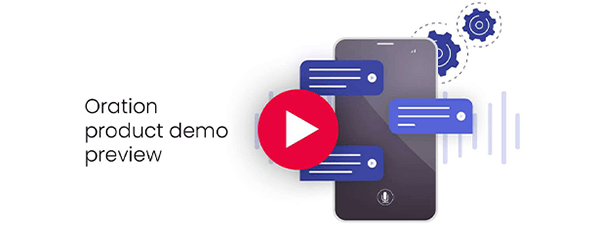As customer expectations continue to rise, businesses are under mounting pressure to deliver fast, efficient support. 77% of customers expect an immediate response when they contact a company1, with many considering even a 10-minute wait too long2. Furthermore, 74% of customers are likely to use self-service options again if their transition to live support is smooth3.
In addition to expectations for speed, companies also face the financial strain of high call volumes. The cost of handling a live service interaction can range from $7 to $104, while digital alternatives such as chat or self-service options cost just a fraction, at about $0.10 to $0.50 per interaction5.
With 78% of consumers having abandoned a purchase due to poor customer service6, it’s clear that optimising customer support is essential. By implementing call deflection strategies—redirecting enquiries to more efficient channels such as self-service portals, chatbots or SMS—businesses can significantly reduce their call volume and operational costs. Not only does this lead to savings, but it also enhances customer satisfaction, with 86% of customers willing to pay more for a better service experience7.
As contact centres look to the future, investing in tools like AI-powered deflection is becoming a necessity, with 95% of customer interactions predicted to be AI-driven by 20258. This blog will explore the fundamentals of call deflection, its benefits and best practices to help businesses optimise their support strategies and meet evolving customer expectations.
What is call deflection?
Call deflection is the process of redirecting inbound calls to alternative communication channels like live chat, SMS, self-service portals or even automated systems. The goal is to resolve customer issues quickly without needing direct interaction with an agent, thus reducing strain on the contact centre.
Traditional call deflection methods often involved pre-recorded messages during hold times, encouraging customers to visit websites or use other resources. However, with advancements in technology, modern call deflection has evolved to include AI-powered conversational IVRs, chatbots and SMS-based solutions, offering more targeted and effective outcomes.
Why is call deflection important?
Call deflection is important because it enables contact centres to handle increasing volumes of customer enquiries without overwhelming their resources.
Improved customer experience
Customers expect quick responses when they reach out for support. Call deflection helps meet this demand by providing alternative channels, such as self-service portals or chatbots, that can resolve common queries efficiently. This eliminates the frustration of waiting in long phone queues, resulting in a more positive customer experience.
Reduced call volume and agent workload
By diverting routine enquiries to digital channels, contact centres can significantly reduce the number of calls that need to be handled by agents. Automated solutions like chatbots can handle simple queries, allowing agents to focus on more complex, high-priority interactions. This leads to increased productivity and ensures that agents are available to manage more urgent issues.
Cost efficiency
Handling customer enquiries through live agents can be costly, especially when compared to more automated solutions like chatbots or self-service platforms. By leveraging call deflection, businesses can reduce their operational costs without sacrificing the quality of support provided to customers.
Enhanced agent morale
Call deflection can also improve employee satisfaction. When agents are relieved of repetitive, low-value tasks, they can focus on more challenging and fulfilling work. This helps reduce burnout and turnover, creating a more motivated and engaged workforce, which in turn leads to better service quality.
24/7 support availability
With call deflection in place, businesses can offer support around the clock. Self-service platforms, AI chatbots and other automated solutions provide customers with immediate assistance at any time, ensuring that issues can be resolved even outside of regular business hours. This is particularly beneficial for companies serving global markets, where customers in different time zones may need support at all hours.
Best practices for effective call deflection
Implementing call deflection effectively requires a balance of the right technology, customer-centric strategies and continuous optimisation. The goal is to redirect enquiries without frustrating customers, ensuring they still receive efficient and relevant solutions through alternative channels.
-
Leverage AI-powered IVRs for intelligent deflection
Traditional IVR systems are often rigid, offering limited menu-based options that don’t fully address customer needs. By integrating AI-powered conversational IVRs, contact centres can analyse customer language and intent in real time. This enables more accurate routing of enquiries to the most relevant self-service options or digital channels, such as chatbots or knowledge bases. AI-driven systems provide flexibility, enhancing the accuracy of deflection and reducing the chances of customer frustration. -
Utilise chatbots and live chat for immediate assistance
One of the most effective ways to deflect calls is through chatbots and live chat. Chatbots can manage simple, repetitive queries, such as account information or store hours, while live chat is ideal for more complex but non-urgent enquiries. This enables agents to focus on more high-value tasks, while ensuring that customers receive timely and relevant support through their preferred digital channel. -
Develop and maintain a comprehensive knowledge base
A well-organised, continually updated knowledge base is essential for effective call deflection. By providing detailed articles, FAQs and video tutorials, businesses give customers the resources they need to resolve issues on their own. For best results, ensure that your knowledge base is easy to navigate and accessible through various channels, including your website, mobile app and IVR systems. Additionally, analysing the types of enquiries coming into the contact centre can help identify gaps in the knowledge base, ensuring it stays relevant and useful. -
Incorporate SMS for visual information and follow-up
In some cases, customers may need visual information, such as a map or a link to a webpage, which is best conveyed through SMS. Integrating SMS into your deflection strategy offers an added layer of convenience for customers, allowing them to receive the necessary information without waiting on hold. Additionally, SMS can be used as a follow-up tool after deflecting a call, helping to confirm that the customer’s issue has been resolved. -
Offer seamless transitions between channels
One of the challenges of call deflection is ensuring that customers don’t feel frustrated when they are moved between channels. To avoid this, ensure smooth transitions between self-service tools and live agents. For instance, if a chatbot is unable to resolve an issue, it should seamlessly hand off the customer to a live agent, with all context and history transferred. This prevents customers from having to repeat themselves and creates a more cohesive support experience. -
Monitor and optimise continuously
Effective call deflection isn’t a one-time project; it requires ongoing monitoring and optimisation. Regularly analyse customer feedback, deflection rates and resolution times to identify areas for improvement. AI and machine learning tools can be particularly useful in this process, as they can continually learn from customer interactions and adapt deflection strategies accordingly. Periodically updating self-service content and knowledge bases is also crucial for maintaining the accuracy and relevance of deflection efforts.
The benefits of call deflection beyond cost savings
While reducing operational costs is one of the main reasons companies adopt call deflection, its benefits extend far beyond financial savings. Call deflection improves customer experience, strengthens customer relationships, enhances agent performance and allows businesses to scale their customer service efforts effectively.
Greater customer autonomy and control
Call deflection empowers customers by giving them the autonomy to choose how they resolve their issues, whether through self-service options, chatbots or live chat. This level of control enhances the customer experience by providing flexible and personalised support pathways. Customers who feel they have control over their service interactions are more likely to have positive experiences and stay loyal to the brand.
Boosting customer loyalty and retention
Efficient service through call deflection helps create positive customer interactions, which in turn builds trust. Customers who experience fast, reliable solutions through self-service or alternative channels are more likely to return and engage with the brand in the future. This loyalty is crucial in competitive industries where retaining customers can be more cost-effective than acquiring new ones
Scalability for high-demand periods
Call deflection provides a scalable solution for businesses, allowing them to handle higher call volumes without increasing staffing. During peak periods, like holidays or unexpected crises, automated and self-service channels can absorb the surge in enquiries without sacrificing service quality. This flexibility allows businesses to maintain consistent customer support even under pressure.
Increased focus on high-value customer interactions
By deflecting simpler enquiries to self-service channels, businesses can focus their human resources on more complex and high-value customer interactions. Agents can spend more time addressing in-depth issues that require personal attention, leading to a more rewarding experience for both the customer and the agent. This shift improves the quality of support for customers with complex problems while maintaining efficiency.
24/7 availability across global markets
One of the most impactful benefits of call deflection is its ability to provide round-the-clock support. Self-service tools, chatbots and automated systems are available 24/7, allowing businesses to cater to customers from different time zones and provide continuous service without needing to staff additional shifts. This constant availability enhances the brand’s global reach and makes support accessible whenever needed.
Reducing agent burnout
When agents are freed from handling repetitive and low-value queries, their workload becomes more manageable, reducing the likelihood of burnout. They can focus on meaningful, problem-solving tasks, which boosts job satisfaction and performance. Happier agents are more likely to stay with the company long-term, lowering turnover rates and the associated costs of recruitment and training.
Summary
Call deflection is a vital strategy for modern contact centres, offering not just cost savings but a range of benefits like improved customer experience, reduced call volume and enhanced agent productivity. By redirecting routine enquiries to digital channels like self-service or chat, businesses can offer faster, more convenient solutions to customers while optimising their resources. Implementing best practices for call deflection, such as using AI-powered IVRs and maintaining a comprehensive knowledge base, ensures long-term efficiency and customer satisfaction.
An excellent example of this success is an Australian supermarket that saved over $1.3 million in two years by using Oration, an AI-powered solution that deflected voice calls to a web chat service. This case demonstrates how businesses can reduce costs and improve customer interactions through intelligent call deflection.
References
1. Salesforce | State of the Connected Customer Report
2. Hubspot | Customer Service Expectations Survey
3. Gartner | Gartner Survey Finds 62% of Customer Service Channel Transitions are "High-Effort"
4. WorldMetrics.org | Contact Center Statistics: Frustrations, Turnover, and Market Growth Revealed
5. Gartner | Gartner Says Only 9% of Customers Report Solving Their Issues Completely via Self-Service
6. National Retail Association | Are customer complaints a good thing?
7. Forbes | 4 Actionable Customer Experience Statistics
8. Microsoft | Powering the Future of the Customer Experience







